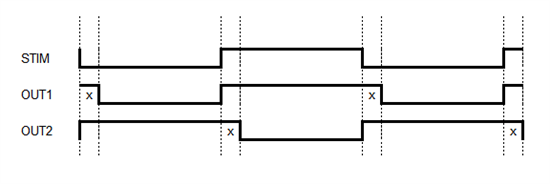Hello,
I'm trying to accomplish creating two PWMs triggered by an external stimulus. The signals need to overlap by a software controlled amount of time (x). The picture below shows the signals that I'm trying to generate with respect to the stimulus.
I've been looking at the Piccolo device's PWM module and it is not obvious to me that this can actually be done. Can you please give me some insight on how this can be done if at all.
The stimulus will switch no faster than 500 Hz. I'm looking for the value of x to be on the order of microseconds. I also need to make sure the timing is reliable cycle to cycle.
Thanks for your help.
Mike


